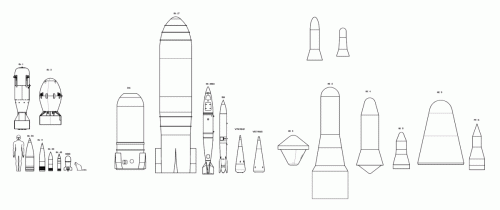U.S. Should Pursue Nuclear EMP Weapon: Ex-Lab Head Feb. 20, 2013 By Rachel Oswald Global Security Newswire
ARLINGTON, Va. -- One of the United States' most prominent nuclear weapons experts on Wednesday urged the government to develop nuclear weapons that could be used to short-circuit enemies' electrical infrastructure, to counter similar capabilities possessed by Russia and China. Former Lawrence Livermore National Laboratory head John Foster noted in a speech at the annual Nuclear Deterrence Summit recent claims by Moscow that it has "developed and
deployed no-yield clean penetrating EMP weapons tailored to terminate any conventional attack." "Similarly if the U.S. were to send a naval carrier force to aid Taiwan, the Chinese could
use a nuclear EMP weapon to disable the carriers’ command and control," Foster asserted. "Such declaratory warnings and capabilities cause our allies to question their confidence in our continued deterrence." Foster, who has long advocated for development of next-generation nuclear weapons, did not cite examples of partner nations that have become skeptical of the strength of U.S. extended deterrence in light of Russian and Chinese
offensive EMP capabilities.
"The credibility of our nuclear deterrent would be enhanced if we could develop and certify nuclear weapons such as those described by Russia and China," he stated, adding, that at the minimum the Defense Department and the national nuclear laboratories "should promptly address what capabilities are most needed and if they can be provided
without nuclear testing."
Washington's nuclear weapons policy for years has been to not pursue additional capabilities out of concern that would open up new arms races. The United States has maintained a voluntary moratorium on nuclear testing since 1992.
"Yes, some of those capabilities might be considered to be new and would then have to be reviewed by the White House and approved by the president. But that hurdle should not prevent the DOD from requesting what is needed to provide a more credible nuclear deterrent," according to the physicist who led the Livermore site from 1958 to 1965 and subsequently served at high levels at the Pentagon. The George W. Bush administration was interested in developing a
Robust Nuclear Earth Penetrator, which was envisioned as a low-yield nuclear weapon that could destroy enemies' subterranean WMD arsenals without causing significant loss of life. Lawmakers refused to fund work on the weapon in the wake of a congressionally ordered study by the National Academy of Sciences that concluded the warhead could cause massive loss of life as it would not be able to bury itself deep enough in the ground.
--------------------------------------------------------
My plan;
1) Robust R&D on advanced weapons concepts (or as I like to say is the 4th Generation possible)
2) EMP Weapon
3) RNEP
4) RRW
5) High yield hard target or meteor deflector
6) Micro Yield limited collateral damage warhead
Of course in conjunction with;
1) New ICBM (120" diameter heavy silo stuffer) & Prompt Global Strike Missile
2) AMaRV/HTV-2 warhead integration
---------------------------------------------------
My current 'Smartphone' location................fantasyland ;D


